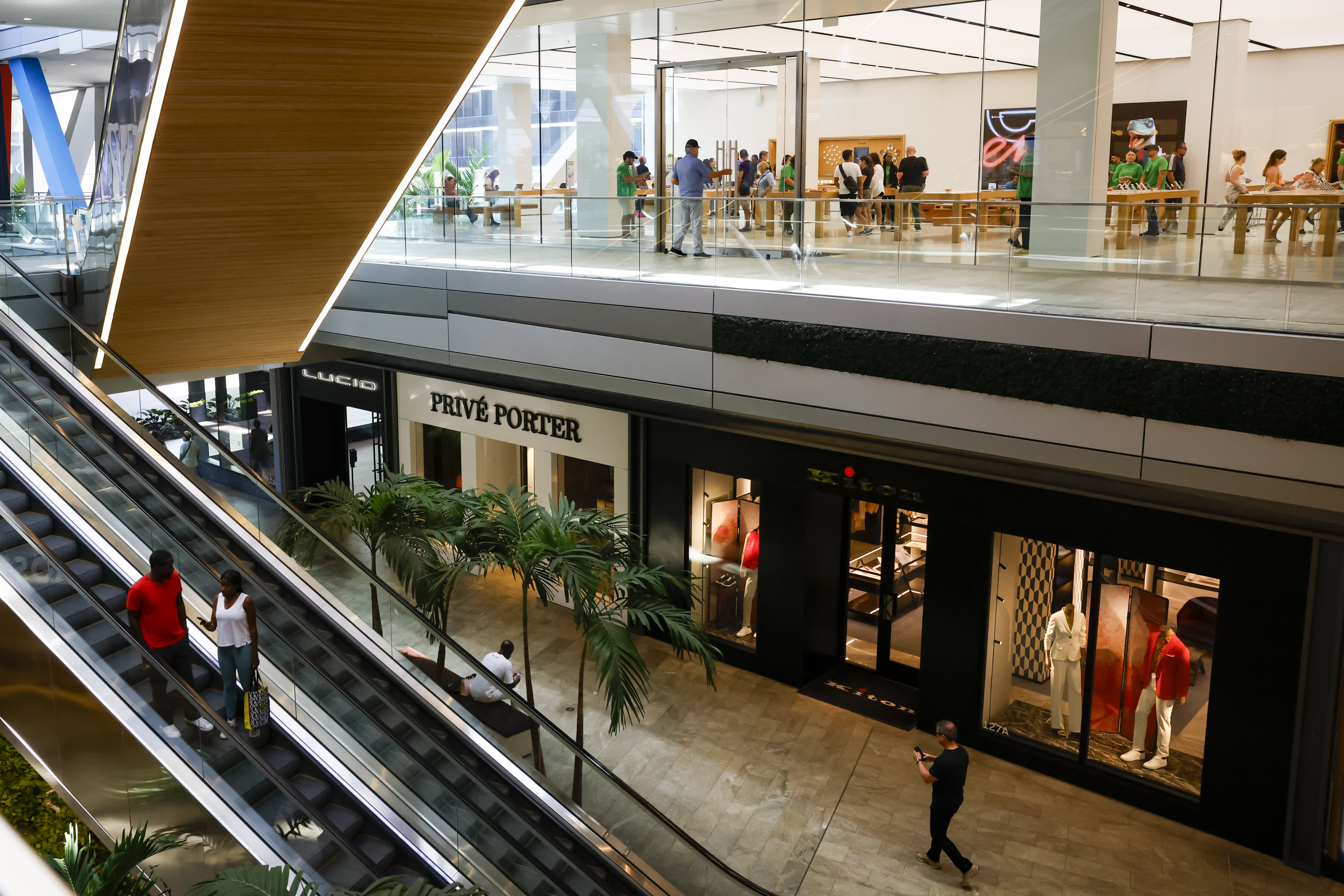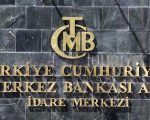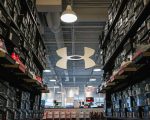
Consumer spending held up well in July as inflation slowed, with retail sales turning in a stronger-than-expected showing for the month, the Commerce Department reported Tuesday.
The advanced retail sales report showed a seasonally adjusted increase of 0.7% for the month, better than the 0.4% Dow Jones estimate. Excluding autos, sales rose a robust 1%, also against a 0.4% forecast. Both readings were the best monthly gains since January.
As the numbers are not adjusted for inflation, they showed a consumer able to keep ahead of price increases that have been prevalent over the past two years. The consumer price index rose 0.2% on the month, indicating solid demand.
July’s numbers were boosted by a 1.9% jump in spending at online retailers, while sporting goods and related stores increased 1.5% and food service and drinking places rose 1.4%.
On the downside, furniture sales slumped 1.8% and electronics and appliance stores reported a 1.3% drop. Gas station sales rose just 0.4% on the month despite rising prices at the pump.
The report adds to the narrative that the U.S. economy may be able to avoid a much-predicted recession brought on by a series of Federal Reserve interest rate hikes aimed at controlling inflation.
In a series of 11 increases since March 2022, the central bank has taken up its key borrowing rate by 5.25 percentage points to hits highest level in more than 22 years. Regardless, consumers, who power about two-thirds of the entire $26.8 trillion U.S. economy, have persevered.
“Despite the additional pressure put on the Fed, Americans’ sustained ability to spend speaks to the strength of the US economy in the face of global economic challenges,” said Mike Loewengart, head of model portfolio construction at the Morgan Stanley Global Investment Office.
As saving has begun to dry up, shoppers have shown a willingness to use credit cards, the balances of which exceeded $1 trillion for the first time in the second quarter of 2023.
July’s data showed that spending was widespread, with most categories showing increases. However, motor vehicle sales fell 0.3% as well. On a 12-month basis, sales rose 3.2%, which is exactly in line with the annual increase in the CPI.
A separate report Tuesday, however, showed that inflation pressures linger after hitting their highest level in more than 40 years in the summer of 2022.
Import prices moved 0.4% higher in July, higher than the 0.2% estimate, according to the Bureau of Labor Statistics. That was only the second monthly gain in 2023, as the year-over-year rate declined 4.4%. A year ago, the annual increase was 8.8%.
Virtually all of the increase came from a 3.6% rise in imported fuel prices. Import prices were unchanged when excluding fuel, according to the BLS.
Export prices, though, rose even more, gaining 0.7% on the month. However, they are down 7.9% from a year ago, after surging 12.9% from July 2021 to July 2022.
“Consumers spent with vigor in July, perhaps with a sense of relief that inflation is fading even in the absence of recession or extensive job losses,” said Jim Baird, chief investment officer at Plante Moran Financial Advisors. “Is a soft landing still on the table? It’s certainly possible, but it seems a stretch to conclude that it’s probable.”
An additional report Tuesday presented another mixed bag of data.
The Empire State Manufacturing Survey, which gauges activity in the New York region, slumped 20 points in August to a reading of -19. That represents the difference between companies reporting expansion against contraction, and was much lower than the -1.4 Dow Jones estimate.
New orders and shipments dropped sharply on the month, while prices paid and received both moved considerably higher.
Despite the poor August reading, the index for future business conditions, which measures expectations six months out, increased to 19.9, a move up of 6 points. That came as new orders and shipments, the big drag in the current conditions survey, to “increase significantly,” while employment is “expected to grow considerably.”
Capital spending expectations also rose sharply.








